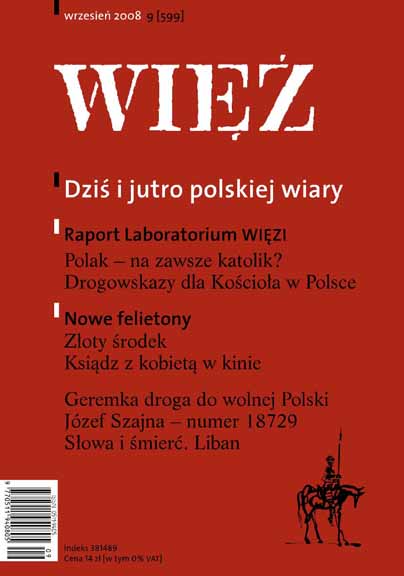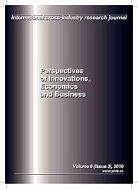





Keywords: Induction machine; broken bars faults; squirrel cage; harmonics.
Induction motors are important part of safe and efficient running of any industrial plant. These motors are often used in industrial applications thanks to their usability and their robustness. Faults and failures of induction machine can lead to excessive downtimes processes; generate large losses in revenues and long term maintenance. Early detection of motor abnormalities would help avoiding costly breakdowns. In this paper a diagnostic technique of induction motor broken rotor bars is presented. The applied method is the so-called Motor Current Signature Analysis (MCSA) which utilized the results of spectral analysis of the stator current. The broken rotor bars and rings will cause twice slip frequency side bands around the supplying frequency. The fault detection method consists in monitoring of stator phase current spectrum. Twice slip frequency side bands around the main frequency detected by spectral analysis is an indicator of the broken bars. The experimental results show the efficiency of the method.
More...
Keywords: Foreign direct investment; enterprises with foreign investment; acquisitions and mergers (M&A); joint ventures; greenfield investment; transnational corporations (TNC); investment climate.
Foreign direct investments (FDI) mostly occur in a form of mergers and acquisitions (M&A) - about 90%; other two forms are joint venture and greenfield investment. Which form is the most important and efficient one for various FDI-recipient countries? The choice of any form of transnational investment depends on a very large scale of factors, as an economic development level of a country, aims and rate of economy’s transformation, national government policy, etc. For example, M&A as a form dominates in developed countries. Creating a joint venture appears as the most efficient form in attracting FDI in many developing and some of CIS countries. The paper examines the particularities of FDI trends in Uzbekistan.
More...
Keywords: Investment; agriculture; development.
Investments are one of the main factors of agricultural development and agricultural development can be considered a function of investment. Agriculture, as one of the most important economic areas in Serbia is need of investments which can intensify agricultural production. The whole progress of humanity caused by the continuous separation of part of the surplus and its investment in the steady development of productive forces of every society, regardless of the mode of production and productive relations that govern it.
More...
Keywords: New economy; globalization; changes; skill; management; performance.
Article focuses on selected features of the new economy, especially globalization, changes brought about as a consequence, new skills required for management, including a shift in the indicators for assessing business performance.
More...
Keywords: Risk; preparedness for risk; social instability; group; decision making.
The author analyzes theoretical sources with the view of operationalization and systemization of the notions of risk as well as the notions that are connected to it. This article provides a detailed overview of the definition of risk and its components; it also identifies external and internal sources of uncertainty as one of the main components of risk situation. This article is seen as an attempt to analyze a risky situation and recognize whether the phenomenon of risk is the factor of organizational behaviour. And still there are relevant though unsolved theoretical and practical issues concerning the problem of individual psychological disposition to risk in connection with individual personal peculiarities and social conditions.
More...
Keywords: Dispersion; mechanochemical activation; assimilable phosphate; phosphorite; sulfur.
The paper examines influence of the modifying additives on properties of Karatau and Chilisay dispersed phosphorites. Authors have revealed effects of temperature and the nature of activating additives on the content of assimilated in Trilon B P2O5; on chloral- and lemon-soluble phosphate forms in derived products as well. It is shown, that Chilisay phosphorite is exposed to the greatest structural changes in dispersion process in all temperature intervals supposing the presence of modifying additives.
More...
Keywords: Bank crisis; banking institutions; banking refoms; crisis management.
The concepts of regulatory changes, published by individual experts as well as institutions responsible for the financial market, are burdened with the experience of the last subprime credit crunch. Beyond the field of interest there are risks that have appeared in the last years and require decisive actions from banks, e.g. in the area of Internet banking or compliance. These areas seem to need some institutional support for the sector. The author suggets that crisis shock must be fought with the intervention shock, i.e. with a number funds of a number of institutions and huge amounts.
More...
Keywords: Trade liberalization; protectionism; regional cooperation; Central Asia.
The aim of this paper is to present selected experiences of European Union trade liberalization, impact of globalization on vulnerable sectors of the EU. Many such experiences are discussed. Central Asian countries must consider vast amount of data, sector-specific information and aspects and still it will not be easy to say that pursued liberalization is the good direction to a wealthier nation with healthy regions, richer citizens and higher tax income for government. We start with brief introduction discussing primary motivation for European liberalization, then we focus on review selected literature sources, concluding that liberalization in general is a good thing and that there is very high probability of success but no guarantees can be drawn as every country is very specific and all policies must be pursued with high degree of attention and thorough analysis. Based on good EU examples of BFTA and CEFTA we recommend considering multilateral free trade agreement within CIS free trade area.
More...
Keywords: Cotton complex; cotton processing enterprises; regional cotton terminal; farms; cotton fiber; investment program.
The cotton production complex of Uzbekistan has high rating comparing other export oriented branches. Cotton fiber value in 2008 share made 12% from total export of the country. The paper observes some trends and policy priorities in cotton industry development.
More...
Keywords: Tourism product; mathematical modeling; management; marketing; informational business technologies.
Tourism sector remains under- analyzed by economists and specifically there is a need to develop a model which allows clarifying the impact of government policy in transition countries on this sector. This paper aims to analyze the influence of currency liberalization on the volume of services in tourism from 1995 to 2009.
More...
Keywords: Teambuilding; teamwork; synergies; common goals; collective responsibility; model of team formation; recruiting; team rehearsal.
Improving competitiveness of organizations necessary for their success in a market economy is no longer possible only due to material resources. This implies need for qualitatively new approach to human capital. The author reviews approaches to team building and suggests team management model based on situations-cases in which the organized one way or another team reaches goal.
More...
Keywords: Agrarian reform; cooperatives; land fragmentation; reform law; informal area; legalization.
After gaining independence in Albania in 1912, property ownership experienced major reforms. During communism many agricultural lands were seized by the Agrarian Reform Law. In 1990, with the fall of communism there was a huge demographic movement of people from villages to urban areas, where they settled in lands that were used by the Cooperatives. This created a lot of problems with previous land owners whose land was seized and given to the Cooperativa. Today there is a problem with the rights to property ownership, and legal certificates of ownership.
More...
Keywords: Higher education; performance management; key performance indicators.
Higher education is enduring fundamental changes - universities are experimenting with new ways of funding and forging partnerships with private companies, competition is fiercer than ever before. All these changes indicate that higher education is becoming an industry. Thus, in order to succeed, institutions of higher education, just like profit oriented organizations, have to know how to enhance an manage their performance. The paper depicts the process of defining key performance indicators for higher education institutions in Serbia. Once determined, key performance indicators become a basis for improving control of use of organizational resources, quality of business results and for aligning business strategy with business technology.
More...
Keywords: Tourism; international; travel company; marketing; market research.
The aim of this article is to present results of Uzbek travel companies survey focusing primarily on market research and strategy-setting while putting this in contrast to international experience in this sector. We present that many Uzbek travel companies are not used to do proper marketing research, only the biggest are. There are not rare cases of situations when management does not know how to define strategic behavior and strategy itself (as majority of companies lack long-term vision and orient themselves primarily on short run profits).
More...
Keywords: Bulk weight; cotton; loading; humidity; pressure; density; distribution; deformation; condensation.
The paper examines vertical and lateral approaches to cotton condensation. The research suggests empirical dependence between bulk weight of raw cotton and condensing loading. Thus, the received theoretical dependence helps to define more effective method of cotton condensation.
More...
Keywords: Energy indicators; sustainable development; poverty measurement.
A common method employed in tracking the success of poverty alleviation in ensuring sustainable development is through the use of a set of lead indicators which provide tangible measures of evaluating fluctuations in both poverty and environmental quality. A requirement of such lead indicators is that they be diverse in their approach, as indicators from different disciplines have their strengths and weaknesses. A motivation is made here for broadening the scope of such research through the inclusion of a set of energy based poverty indicators in the area of poverty assessment. Such energy poverty indicators provide an invaluable extra dimension in the assessment in that they relate to all three sustainability spheres: economic, social and environmental.
More...